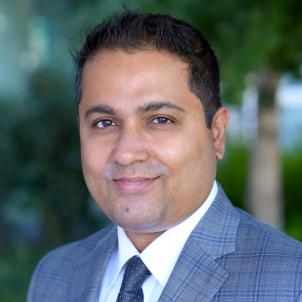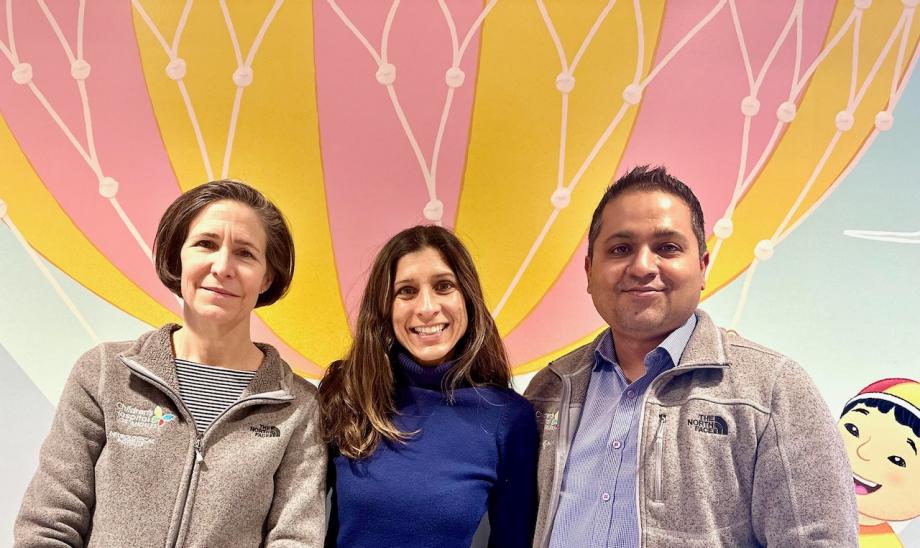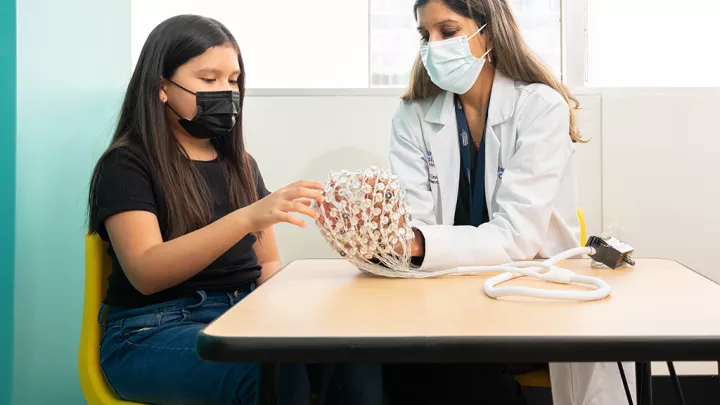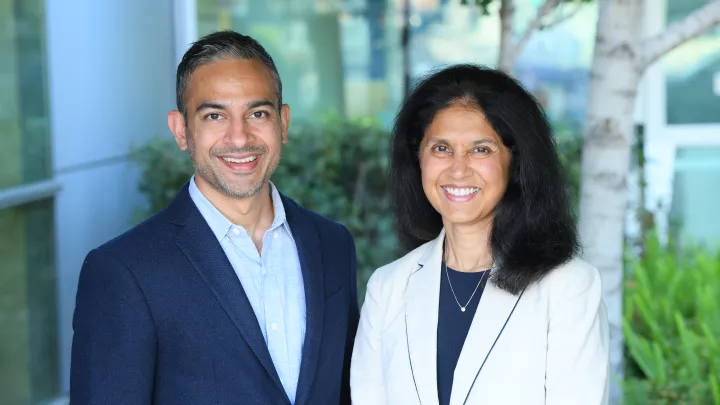
How Is Care Changing for Kids With Tuberous Sclerosis Complex?
This spring, Children’s Hospital Los Angeles became one of just 15 pediatric hospitals in the country to be designated as a TSC Alliance Center of Excellence—demonstrating the highest level of comprehensive services for diagnosing and managing tuberous sclerosis complex (TSC).

CHLA sees more than 120 young patients a year with TSC. A rare genetic disorder, TSC can cause noncancerous tumors to form in several organs, including the brain, eyes, heart, kidneys, skin and lungs.
TSC expert Vijay Vishwanath, MD, PhD, a Board-certified pediatric neurologist in the Neurological Institute at CHLA, shares the latest on diagnosing and managing TSC—and the advice he gives every newly diagnosed family.
What goes into a TSC diagnosis?
There are two ways we go about it. The first is clinical diagnosis. We have a set of major and minor clinical criteria—such as skin manifestations (including hypopigmented spots), cardiac tumors, and specific changes in the brain, kidneys, teeth, bone and eyes. In addition to a physical exam that establishes a clinical diagnosis, we will order MRIs of the brain and abdomen, an echocardiogram for cardiac monitoring, and electroencephalography (EEG) to look at the brain’s electric activity.
The second method is genetic testing, where we look for pathogenic variants in the TSC1 or TSC2 genes. Genetic testing is a definitive diagnosis, and we often do it in all individuals with suspected TSC to support the clinical diagnosis and in situations with ambiguous clinical presentations (often leading to a possible TSC diagnosis).
A pathogenic variant in TSC1 or TSC2 confirms the genetic diagnosis of TSC, regardless of the presence or absence of clinical diagnostic criteria.
How early can you diagnose TSC?
The good news is that we are diagnosing TSC earlier now. More pediatricians are detecting skin manifestations like hypopigmented spots and referring babies for evaluation. These spots don’t mean the child has TSC, but it’s important for us to check. In the past, it sometimes took several years for families to get a diagnosis. Today we are even diagnosing some babies prenatally. So that’s a big step forward.
Why is multidisciplinary care so important in TSC?
TSC can affect many different organs, so we need multiple subspecialists to come together to treat the patient as a whole. Each child with TSC presents differently, so we work together to tailor our approach to each patient.
At CHLA, our clinic space is very conducive to these collaborations. Within Neurology we have experts in epilepsy, neurodevelopmental disorders and neurocutaneous disorders—all working together in the same space. We also collaborate very closely with specialists across the hospital, including Cardiology, Nephrology, Dermatology, Neuro-Oncology, Neurosurgery, Medical Genetics and Behavioral Health.
Tena Rosser, MD, has helped foster various collaborations with multiple subspecialties since the inception of the clinic and works closely with TSC patients. Katie Wanninger, RN, is our amazing patient coordinator for the TSC Alliance Center of Excellence.
How is the understanding of TSC-associated neuropsychiatric disorders (TAND) changing?
Our understanding of TAND has multiplied manyfold in recent years. We now know that many people with TSC are affected by a broad range of behavioral, psychiatric, intellectual and psychosocial difficulties. A major one of these is autism spectrum disorder, but TAND also includes anxiety, depression, ADHD, learning disorders and more.
CHLA’s Chief of Neurology, Shafali Spurling Jeste, MD, has been one of the pioneers in this field, and her lab identified early predictors of autism in infants with TSC. We now have a lot of success in detecting autism in babies with TSC in the first 12 to 18 months and initiating therapies and interventions. With TAND, and specifically for autism, early detection plays a big role in how these kids do over the long term.

Are any new TSC treatments on the horizon?
Some research into gene therapy is ongoing in preclinical models of TSC, but it’s still very early to optimize in humans. The TSC-STEPS trial is testing whether mTOR inhibitors (like sirolimus), which are already used in TSC to shrink tumors, can prevent or delay seizures from developing. Another trial, called RAINBOW, is focused on better understanding and treating behavior problems in children with TSC.
In addition, the Food and Drug Administration has approved different formulations of drugs we currently use in epilepsy to make them easier to administer. For example, two seizure “rescue” medications are now available for administration in nonclinical emergency situations via nasal formulations for older kids. Previously these had to be applied as a rectal gel.
There are several anti-seizure medications, like basimglurant and ganaxolone, with new mechanisms of action, that are being tested for TSC-associated epilepsy. And mTOR inhibitors can now also be applied as a topical gel to help shrink TSC facial skin lesions.
What advice do you give parents who have a child newly diagnosed with TSC?
The diagnosis of TSC in a child can have a major impact on the family, given the progressive nature of the condition and the often outwardly evident manifestations. I always tell parents: Don’t look up TSC manifestations online because you’re only going to see the worst-case scenarios.
I’ll discuss the various symptoms to look out for in their child, but their child may also never develop certain issues. My advice is to be aware of what can happen, but not to worry about it. With proper care, people with TSC can live long, full and independent lives.
I also advise parents to talk to other families who are dealing with TSC. At CHLA, we participate in several TSC Alliance events, including the annual Comedy for a Cure event and Step Forward to Cure TSC walk, which have helped many of our families connect with each other. Just knowing that there’s a community out there specifically for TSC patients can do a family a world of good.


